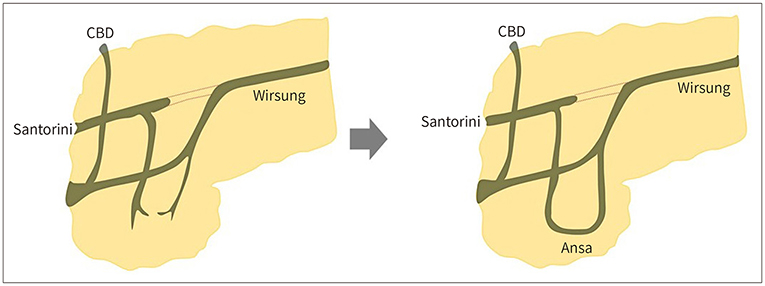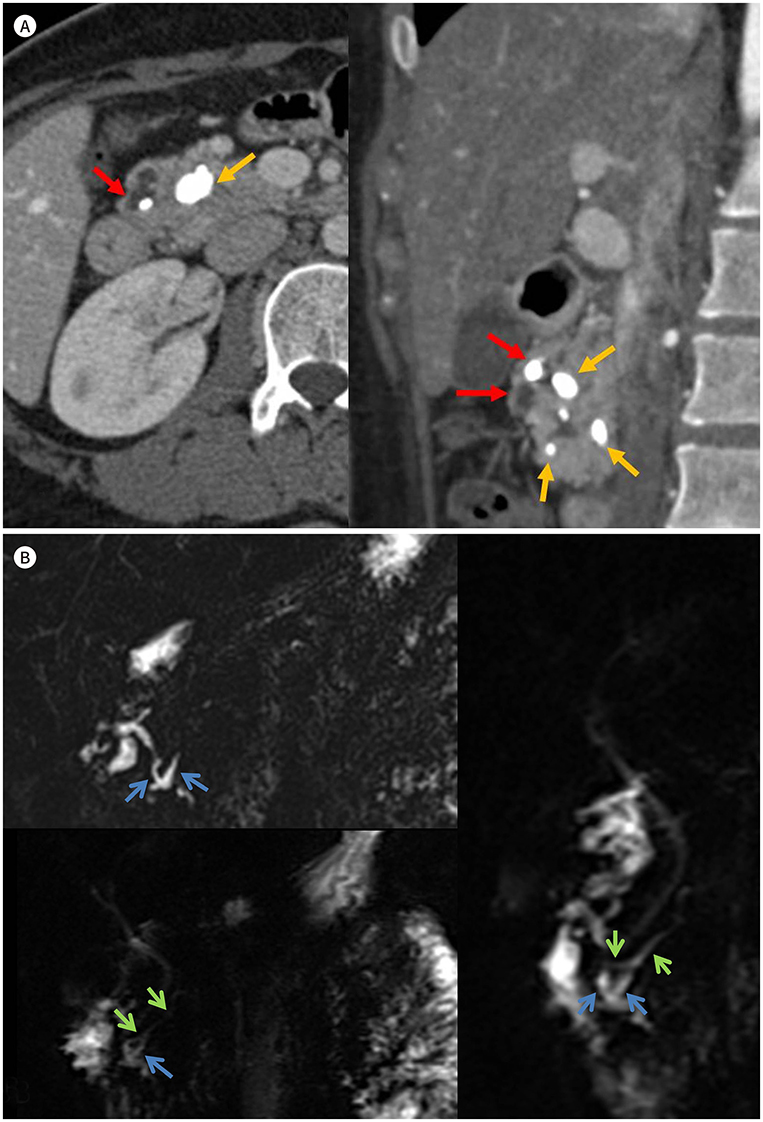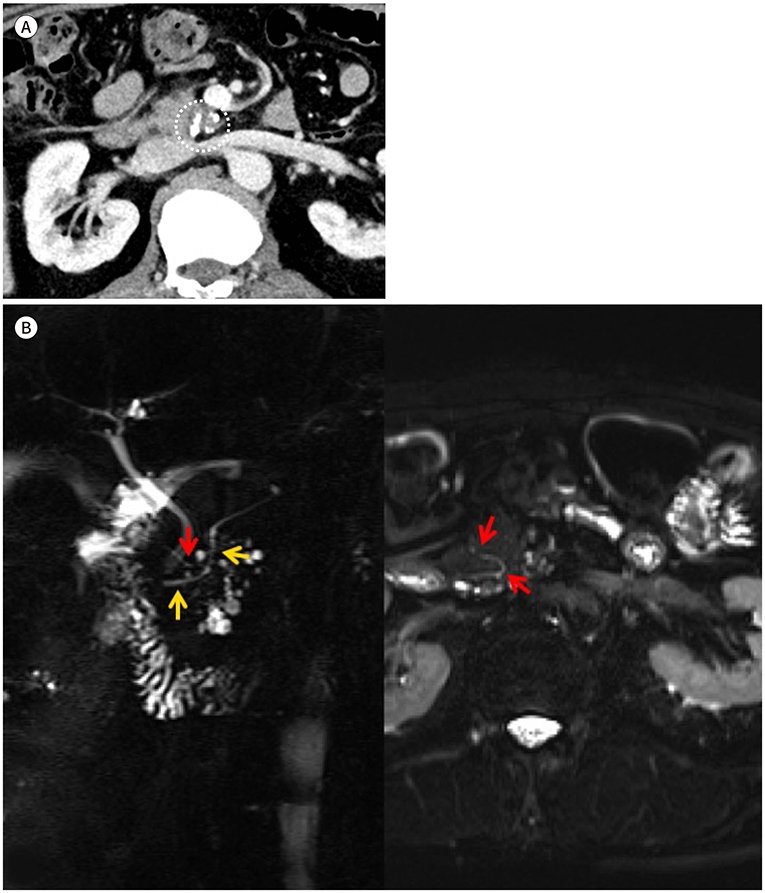J Korean Soc Radiol.
2019 Mar;80(2):365-371. 10.3348/jksr.2019.80.2.365.
Ansa Pancreatica-Type Anatomic Variation of the Pancreatic Duct in Patients with Recurrent Acute Pancreatitis and Chronic Localized Pancreatitis
- Affiliations
-
- 1Department of Radiology and Research Institute of Radiology, University of Ulsan College of Medicine, Asan Medical Center, Seoul, Korea. medimash@gmail.com
- KMID: 2442528
- DOI: http://doi.org/10.3348/jksr.2019.80.2.365
Abstract
- Ansa pancreatic is a rare variation of pancreas duct. Ansa pancreatica is characterized by focal accessory duct atrophy and an additional curved duct linking main and accessory ducts replacing atrophied duct. Ansa pancreatica is considered as a predisposing factor of recurrent pancreatitis. Pancreatitis can be localized in pancreas head and uncinate process, because pancreas head and uncinate process might be drained through the additional hooked duct of ansa pancreatica. We reports three cases of localized chronic or recurrent pancreatitis cases with underlying ansa pancreatica type anatomic variation.
MeSH Terms
Figure
Reference
-
1. Prasanna LC, Rajagopal KV, Thomas HR, Bhat KM. Accessory pancreatic duct patterns and their clinical implications. J Clin Diagn Res. 2015; 9:AC05–AC07.
Article2. Dimitriou I, Katsourakis A, Nikolaidou E, Noussios G. The main anatomical variations of the pancreatic duct system: review of the literature and its importance in surgical practice. J Clin Med Res. 2018; 10:370–375.
Article3. Adibelli ZH, Adatepe M, Imamoglu C, Esen OS, Erkan N, Yildirim M. Anatomic variations of the pancreatic duct and their relevance with the Cambridge classification system: MRCP findings of 1158 consecutive patients. Radiol Oncol. 2016; 50:370–377.
Article4. Dawson W, Langman J. An anatomical-radiological study on the pancreatic duct pattern in man. Anat Rec. 1961; 139:59–68.
Article5. Bhasin DK, Rana SS, Nanda M, Gupta R, Nagi B, Wig JD. Ansa pancreatica type of ductal anatomy in a patient with idiopathic acute pancreatitis. JOP. 2006; 7:315–320.6. Kim HM, Park JY, Kim MJ. Ansa pancreatica: a case report of a type of ductal variation in a patient with idiopathic acute recurrent pancreatitis. J Korean Soc Radiol. 2010; 63:83–86.
Article7. Jarrar MS, Khenissi A, Ghrissi R, Hamila F, Letaief R. Ansa pancreatica: an anatomic variation and a rare cause of acute pancreatitis. Surg Radiol Anat. 2013; 35:745–748.
Article8. Hayashi TY, Gonoi W, Yoshikawa T, Hayashi N, Ohtomo K. Ansa pancreatica as a predisposing factor for recurrent acute pancreatitis. World J Gastroenterol. 2016; 22:8940–8948.
Article9. Borghei P, Sokhandon F, Shirkhoda A, Morgan DE. Anomalies, anatomic variants, and sources of diagnostic pitfalls in pancreatic imaging. Radiology. 2013; 266:28–36.
Article10. Ishii H, Arai K, Fukushima M, Maruoka Y, Hoshino M, Nakamura A, et al. Fusion variations of pancreatic ducts in patients with anomalous arrangement of pancreaticobiliary ductal system. J Hepatobiliary Pancreat Surg. 1998; 5:327–332.
Article
- Full Text Links
- Actions
-
Cited
- CITED
-
- Close
- Share
- Similar articles
-
- Ansa Pancreatica: A Case Report of a Type of Ductal Variation in a Patient with Idiopathic Acute Recurrent Pancreatitis
- Recurrent pancreatitis in the setting of gallbladder agenesis,ansa pancreatica, Santorinicoele and eventual intraductal papillary mucinous neoplasia (IPMN)
- Etiology, Pathogenesis and Natural Course of Chronic Pancreatitis
- A Case of Congenital Anomaly of the Pancreatic Duct Discovered in a Child with Recurrent Acute Pancreatitis
- Endoscopic Treatment of Chronic Pancreatitis




